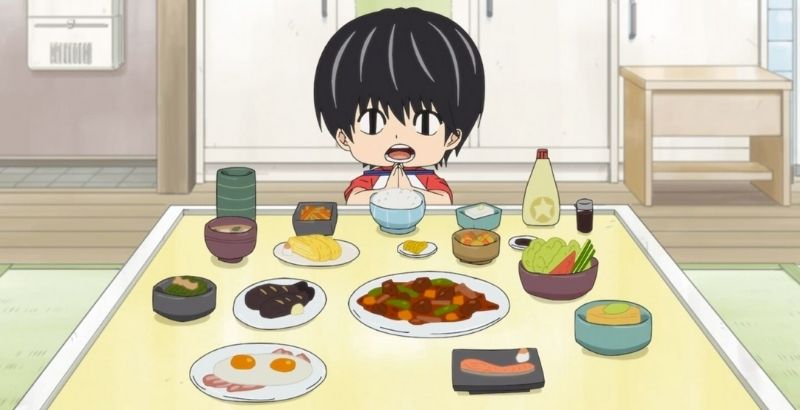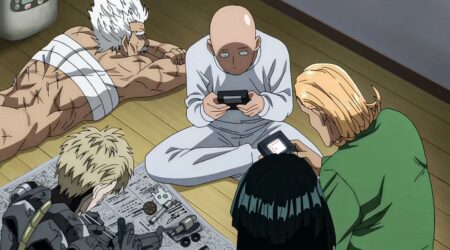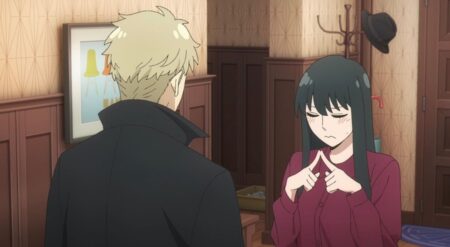CONTENT WARNING: Kotaro Lives Alone and this article features discussion of child abuse.
Kotaro Lives Alone is a Japanese Netflix Original Anime directed by Tomoe Makino, written by Hiroshi Satо̄, and animated by Liden Films. The voice-acting cast consists of Rie Kugimiya as Kotaro, Toshiki Masuda as Shin Karino, Junichi Suwabe as Isamu Tamaru, and Saori Hayami as Mizuki Akitomo. The ten-episode comedy-drama is an adaptation of the Japanese manga series written and illustrated by mangaka Mami Tsumura.
Kotaro Lives Alone centers on a lonely little 4-year-old boy who moves into a ramshackle apartment building all by himself. Without either a mother or father, he is determined not to be treated as a weak child and refuses to help from adults. Shortly after introducing himself to his neighbors, he forms a special bond with the broke manga artist who lives next door to his unit.
At first glance, you might assume Kotaro Lives Alone is a weird gag anime, similar to Yoshito Usui’s Crayon Shin-Chan. I am here to tell you that Kotaro Lives Alone is anything but a simple gag anime with a kid. That’s what I thought I was getting, but Kotaro Lives Alone delivers so much more than just a strange story about a four-year-old living alone. This anime is a thought-provoking, understated story that packs a powerful punch to your emotions as it tackles topics such as trauma, grief, and found family.
First things first, I will admit I misjudged the series initially. I had already made up some ideas of what this anime was going to be like based on the art. I thought the roughly drawn characters meant this would be a wacky comedy anime. I have never been so wrong in my life. While I was not a big fan of the art style initially, it did grow on me more as the story progressed, as if the artwork added some lightheartedness to the heavy subject matter. Usually, the art style in an anime is what grabs and holds my attention in a series. But with this series, while the art is not my cup of tea, it pairs well with the tone of the series and the story.
When it comes to the characters, each feels as though they check off a list of archetypes I have seen in various series before. But at the same time, the writing and character development allow them to stand out with their unique personalities and story arcs in this brief 10-episode series. The core cast of characters consists of the titular character Kotaro, the struggling mangaka, Shin Karino, the leopard print suit-wearing Isamu Tamaru, and the sweet nightclub hostess, Mizuki Akitomo. In addition to the characters’ uniqueness, it is the special connection and support system that forms amongst them that makes this show for me.
Kotaro, by far, is the most unique amongst the entire cast. He is a four-year-old with the seasoned maturity of a middle-aged man who can cook a full-course meal for himself and talks as if he stepped out of the feudal era. As the series goes on, we realize that Kotaro behaves and talks the way he does as a coping mechanism.
One of the main reasons I could not stop watching this show was because I had to know what the deal was with Kotaro. I wanted to know if he was some reincarnated man in a child’s body. Or perhaps some kind of supernatural being or time traveler from the past. But no, none of that is the case with this show.
There is no magic, reincarnation, or any other supernatural reason to explain why Kotaro, a kindergartener, is living all alone. The simple truth of the matter is that Kotaro lives alone because he was abandoned and is trying his best to stay away from an abusive situation.
As the season progresses, more of Kotaro’s past is unveiled, and it becomes clear that he behaves and talks the way he does as a coping mechanism, which explains why he acts the way he does. The traumatic experiences of Kotaro’s past have left him deeply scarred and, unfortunately, forced him to grow up far beyond his age. It is worth noting that to fully enjoy this show. The audience has to suspend their belief in some things in this show. Specifically accepting that in this world where the show takes place four year old can rent an apartment and fend for themselves.
While it seemed like an odd choice at first, I eventually came to appreciate the decision to make Kotaro a four-year-old. It would have been very easy for the writer and director of the series to try and age him up in this adaptation but I think keeping him younger provides a far more impactful story as it sheds light on how neglect and abuse can affect a child at any age no matter how young. And the complex and conflicting feelings that one has to deal with as a result of that trauma.
For example, it is the moments where Kotaro will bluntly say things like “It didn’t occur to me that being born could be a good thing,” or describe his mother’s neglectful actions when she abandoned him. While also trying to process his grief of not knowing whether she is alive or not. All of these show just how much pain and sorrow he has gone through in his very short life.
Thankfully, this series isn’t all about trauma and pain. It is also about healing and having a support system to help you move past the darkness. For most of Kotaro’s life, the adults have either hurt or abandoned him. And he blames himself for the way things went with his parents. Thankfully, the support system of his newfound family with Kotaro’s neighbor, his pseudo-guardians, helps him to heal and accept that the things that happened to him were not his fault.
Kotaro Lives Alone is an unexpected gem that tells a deeply heartfelt story that will leave emotions wrecked in the best of ways. Although the art style may not be everyone’s cup of tea, mine included, I do find it to be very fitting for this series. As it helps to balance out the heavy subject matter with comedy. The storytelling, writing, and unique characters are superb and make this series worth the watch.
Kotaro Lives Alone is streaming exclusively on Netflix.
Kotaro Lives Alone
TL;DR
Kotaro Lives Alone is an unexpected gem that tells a deeply heartfelt story that will leave emotions wrecked in the best of ways. Although the art style may not be everyone’s cup of tea, mine included, I do find it to be very fitting for this series. As it helps to balance out the heavy subject matter with comedy. The storytelling, writing, and unique characters are superb and make this series worth the watch.








